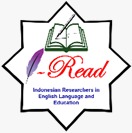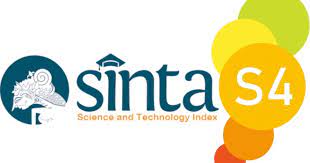Morphological Process of COVID-19 Neologisms: A Study of Compounding
DOI:
https://doi.org/10.22219/englie.v3i2.20415Keywords:
Compounding, COVID-19, NeologismAbstract
This study investigates the compounding process in COVID-19 neologisms. It focuses on words that coexist with words synonymous with the COVID-19 pandemic and the level of public understanding of neologisms that will enter general acceptance through standard English dictionaries. This research is qualitative research. The data comes from Urban Dictionary as a non-standard dictionary involving the community as neologism makers. Data was collected from the first confirmed case of COVID-19 in China on December 8, 2019 to January 31, 2022. Each neologism that resulted from the compounding process with two constituent words was collected to get the most widely used identical word, then compounding by including these words would be analysed to know the results and also the score. We have been found that the lower the score obtained by neologisms with match results, the greater the expectation that neologisms can be accepted by the general public as a global language through standard English dictionaries. Vice versa, the higher the score obtained by neologisms, the smaller the expectations of neologisms can be accepted. However, neologisms with mismatch results are difficult to accept, and even the resulting scores cannot predict anything. Another fact that was found was the error result as a result of the absence of the definition referred to in the standard dictionary. From the overall analysis, nouns are the most used word class.
Downloads
References
Amouzouvi, K., Assamagan, K. A., Azote, S., Connell, S. H., Fankam, J. B. F., Fanomezana, F., ... & Zimba, G. (2021). A model of COVID-19 pandemic evolution in African countries. Scientific African, 14, e00987. https://doi.org/10.1016/j.sciaf.2021.e00987
Anderson, J. M. (2006). Malmkjær, Kirsten, ed. The Linguistics encyclopedia (Ebook ed.). London.
Asif, M., Zhiyong, D., Iram, A., & Nisar, M. (2021). Linguistic analysis of neologism related to coronavirus (COVID-19). Social Sciences & Humanities Open, 4(1), 100201. https://doi.org/10.1016/j.ssaho.2021.100201
Bormann, T., Seyboth, M., Machleb, F., & Weiller, C. (2020). Learning of novel compound nouns–A variant of lexical learning that requires intact verbal short-term memory. Cortex, 124, 23-32. https://doi.org/10.1016/j.cortex.2019.08.024
Budiu, R., & Anderson, J. R. (2001). Word learning in context: Metaphors and neologisms. School of Computer Science, Carnegie Mellon University.
Fotiou, C. (2018). A linguistic analysis of Cypriot Greek-English compound verbs. Lingua, 215, 1-26. https://doi.org/10.1016/j.lingua.2018.09.001
Katamba, Francis. 1993. Morphology. New York: St. Martin’s Press.
Lehrer, A. (2003). Understanding trendy neologisms. Italian Journal of Linguistics, 15, 369-382. https://doi.org/10.1016/B0-08-044854-2/04318-2
Lei, S., Yang, R., & Huang, C. R. (2021). Emergent neologism: A study of an emerging meaning with competing forms based on the first six months of COVID-19. Lingua, 258, 103095. https://doi.org/10.1016/j.lingua.2021.103095
Mahdikhani, M. (2022). Predicting the popularity of tweets by analyzing public opinion and emotions in different stages of Covid-19 pandemic. International Journal of Information Management Data Insights, 2(1), 100053. https://doi.org/10.1016/j.jjimei.2021.100053
Maleki, M., Mahmoudi, M. R., Heydari, M. H., & Pho, K. H. (2020). Modeling and forecasting the spread and death rate of coronavirus (COVID-19) in the world using time series models. Chaos, Solitons & Fractals, 140, 110151. https://doi.org/10.1016/j.chaos.2020.110151
McManis, C, Stollenwerk, D., & Zheng-Sheng, Z. (1987). Language files: Materials for an introduction to language. Reynoldsburg: Advocate Publishing Group.
Miao, L., Last, M., & Litvak, M. (2022). Tracking social media during the COVID-19 pandemic: The case study of lockdown in New York State. Expert Systems with Applications, 187, 115797. https://doi.org/10.1016/j.eswa.2021.115797
Miao, L., So, K. K. F., Im, J., & Jiang, T. (2022). The pandemic’s effects on customer-to-customer engagement in hospitality consumption: A multi-country investigation. International Journal of Hospitality Management, 102, 103158. https://doi.org/10.1016/j.ijhm.2022.103158
Miranda-Mendizabal, A., Recoder, S., Sebastian, E. C., Closas, M. C., Ureña, D. L., Manolov, R., ... & Castellví, P. (2022). Socio-economic and psychological impact of COVID-19 pandemic in a Spanish cohort BIOVAL-D-COVID-19 study protocol. Gaceta Sanitaria, 36(1), 70-73. https://doi.org/10.1016/j.gaceta.2021.10.003
Newmark, P. (1988). A textbook of translation (Vol. 66). New York: Prentice hall.
Rahmadana, M. F., & Sagala, G. H. (2020). Economic resilience dataset in facing physical distancing during COVID-19 global pandemic. Data in brief, 32, 106069. https://doi.org/10.1016/j.dib.2020.106069
Schmidtke, D., & Kuperman, V. (2019). A paradox of apparent brainless behavior: The time-course of compound word recognition. Cortex, 116, 250-267. https://doi.org/10.1016/j.cortex.2018.07.003
Spencer, A., & Zwicky, A. M. (2001). The handbook of morphology. UK: Blackwell.
Stenetorp, P. (2010). Automated extraction of swedish neologisms using a temporally annotated corpus. Skolan för datavetenskap och kommunikation, Kungliga Tekniska högskolan.
Yule, G. (2020). The study of language. Cambridge university press.
Zhao, S., Wu, Y., Tsang, Y. K., Sui, X., & Zhu, Z. (2021). Morpho-semantic analysis of ambiguous morphemes in Chinese compound word recognition: An fMRI study. Neuropsychologia,157,107862. https://doi.org/10.1016/j.neuropsychologia.2021.107862
Downloads
Published
How to Cite
Issue
Section
License
Copyright (c) 2022 Nurhalimah Amiruddin, Abdul Hakim Yassi, Sukmawaty Sukmawaty

This work is licensed under a Creative Commons Attribution-ShareAlike 4.0 International License.
Authors who publish with English Learning Innovation (englie) agree to the following terms:
- For all articles published in English Learning Innovation (englie), copyright is retained by the authors. Authors give permission to the publisher to announce the work with conditions. When the manuscript is accepted for publication, the authors agree to automatic transfer of the publishing right to the publisher.
- Authors retain copyright and grant the journal right of first publication with the work simultaneously licensed under a Creative Commons Attribution-ShareAlike 4.0 International License that allows others to share the work with an acknowledgement of the work's authorship and initial publication in this journal.
- Authors are able to enter into separate, additional contractual arrangements for the non-exclusive distribution of the journal's published version of the work (e.g., post it to an institutional repository or publish it in a book), with an acknowledgment of its initial publication in this journal.
- Authors are permitted and encouraged to post their work online (e.g., in institutional repositories or on their website) prior to and during the submission process, as it can lead to productive exchanges, as well as earlier and greater citation of published work (See The Effect of Open Access).
This work is licensed under a Creative Commons Attribution-ShareAlike 4.0 International License.
















1.png)












